Glowing indoor forest made from paper by Orproject
London architecture studio Orproject has installed a forest of illuminated paper trees that join up to form a continuous canopy at a gallery in New Delhi (+ slideshow).
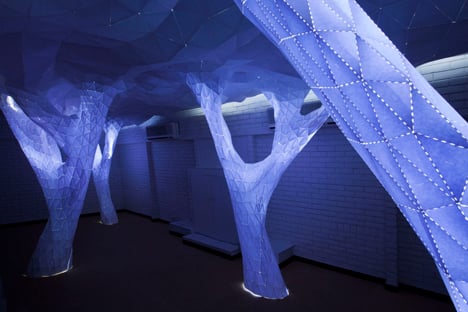
Called Vana, meaning "forest" in Sanskrit, the hanging installation by Orproject features four trunk-like structures designed to mimic natural growth patterns.
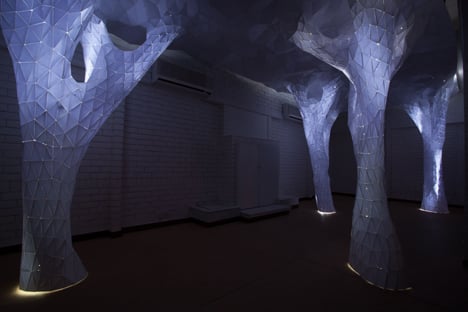
To achieve this, the team developed a series of algorithms that mimic the veins found in leaves.
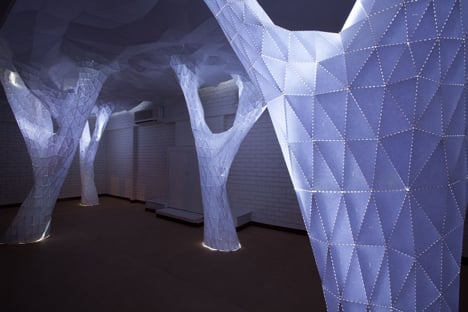
"When the leaf grows, the veins develop with it in order to reach each cell on the surface of the leaf and supply them with nutrients," said Christoph Klemmt, one of the founders of Orproject.
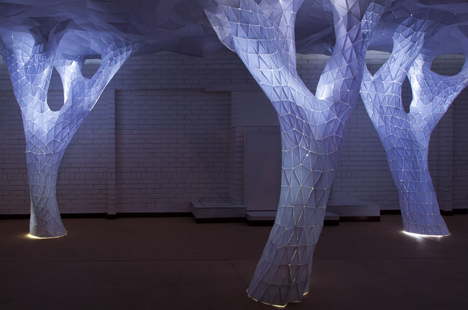
"Also when a tree grows, it tries to get an exposure of each leaf to the sunlight, so a similar mechanism drives the branching of the tree," he explained. "We wrote a computer algorithm to simulate this development, in order to grow architecture."
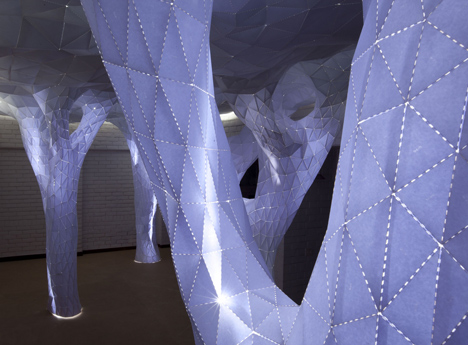
The four trunks branch upwards and outwards from "seed points" on the floor towards "target points" on the ceiling where they join up into a single surface, creating a suspended tensile structure.

The installation is made from triangular segments of paper connected via stitched joints and backlit by LEDs. When the lights are turned on, the light glows through the gaps and highlights the vein-like structure of the piece.
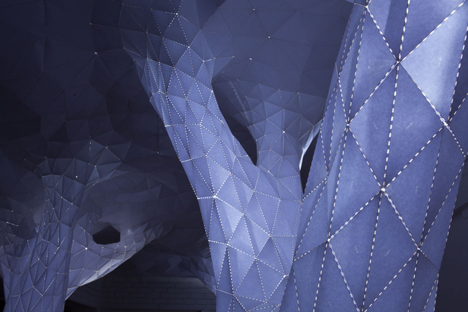
Vana was designed for last year's India Design Forum and is currently on display at The Brick House in New Delhi.
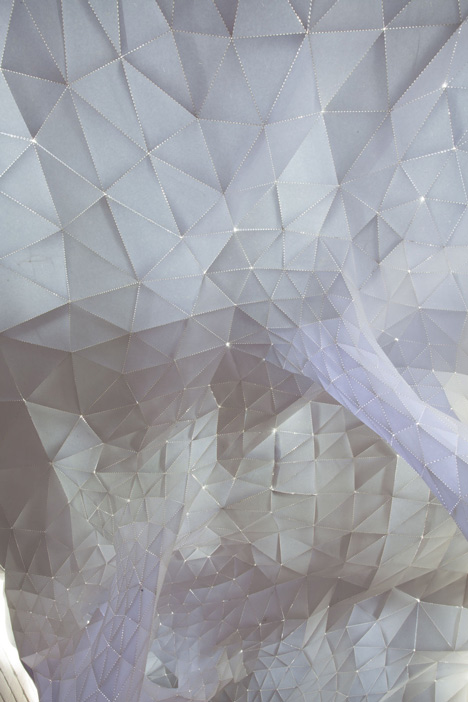
Photography is by Sumedh Prasad and Orproject, copyright of Orproject.
Here's a project description from Orproject:
Vana
Orproject developed a series of algorithms that digitally generate open and closed venation patterns, which can be used to simulate the growth of topiaries. The systems consist of a set of seed points that grow and branch towards target points in order to maximise exposure to light for each leaf. The resulting geometries fulfill these requirements and provide a suitable structural and circulatory system for the plant.
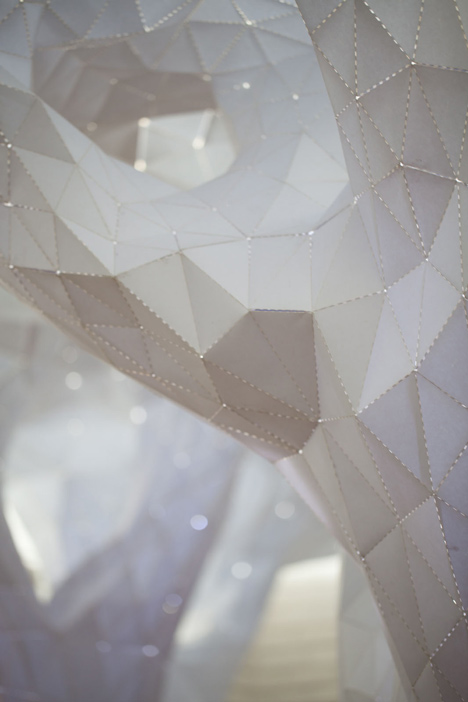
The structural system of topiaries acts mainly in compression and bending. Reversing this, we can obtain a geometry that performs as a tensile system. The installation Vana is designed as a single surface in tension that hangs from the ceiling and descends into the space as four columns of light. The surface is tessellated into triangular segments which are connected by stitched joints. Back lit with LEDs, light shines through the gaps and illuminates the space below with an immersive glow.
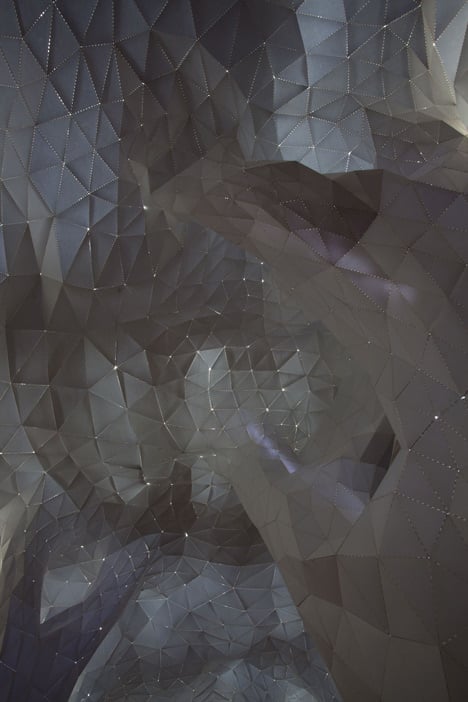
As the prototype for a large scale canopy construction, Vana has been developed as an iso-surface around an anastomotic network diagram, as the cortex around the venation system. In a continuous transformation, nature merges into architecture, columns merge into the sky and solid merges into the ephemeral. Vana appears to grow as tree-like branches blending into a continuous canopy that floats above the visitor.
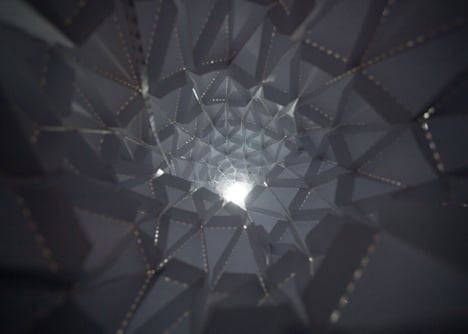
Title: Vana
Architects: Orproject
Project Architects: Rajat Sodhi, Christoph Klemmt
Project Team: Sambit Samant, Manu Sharma